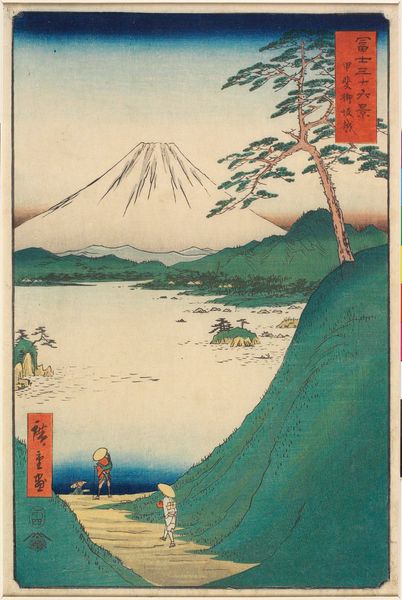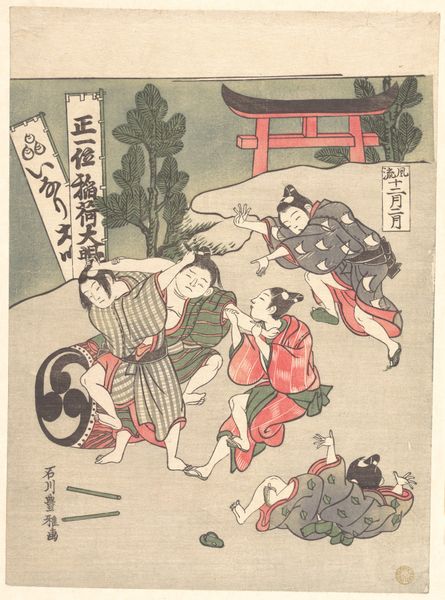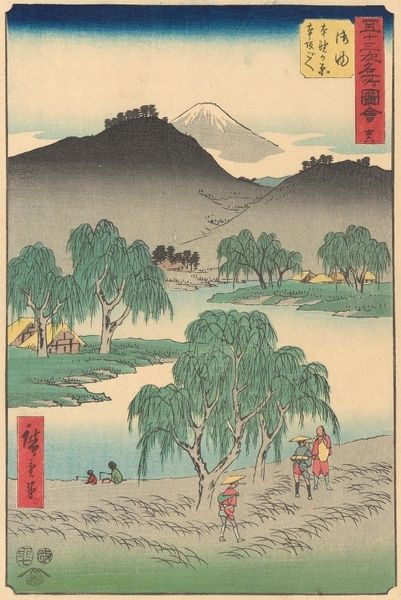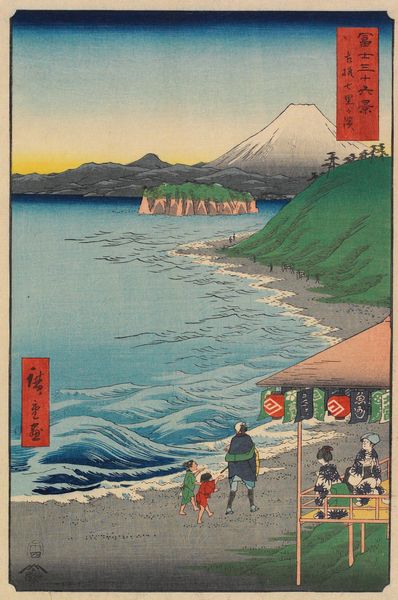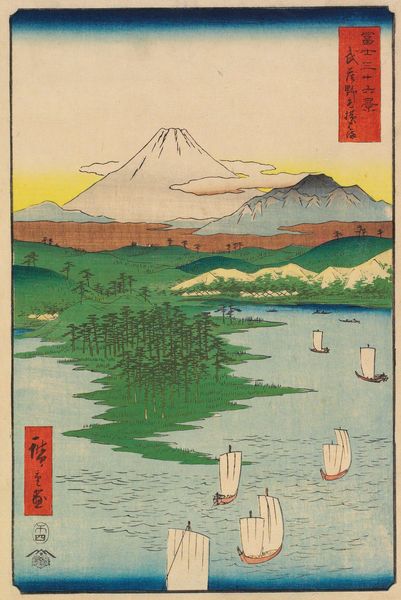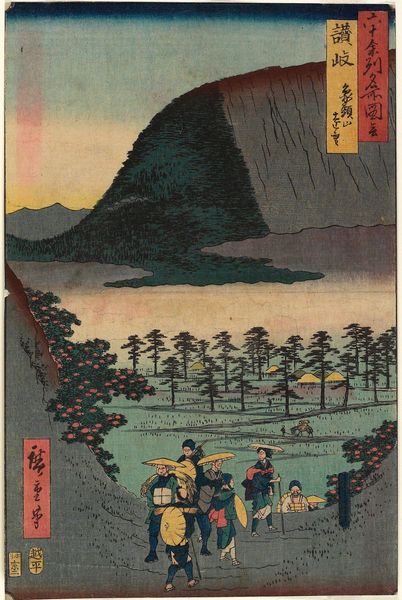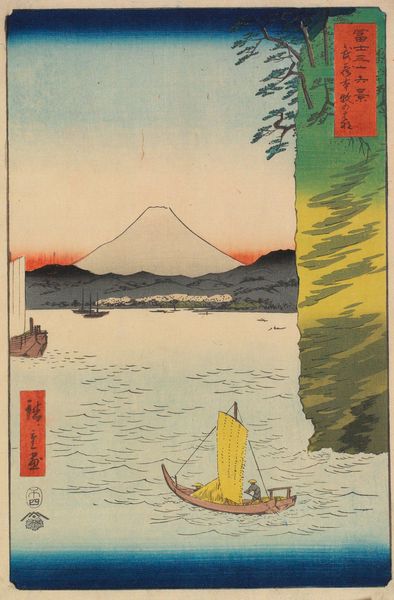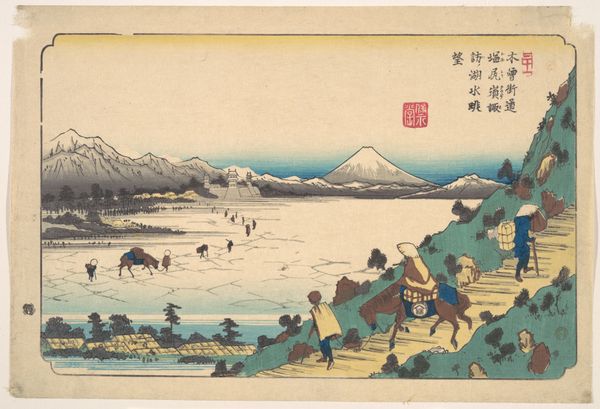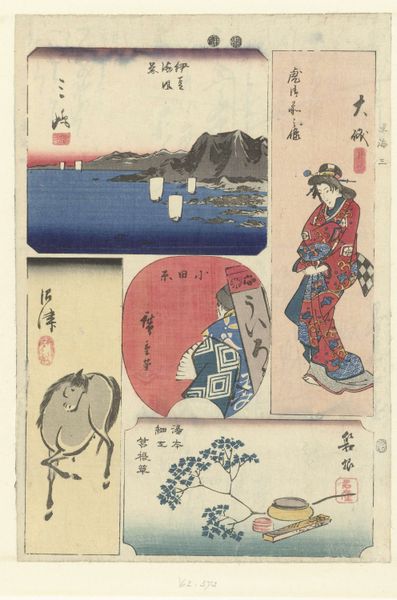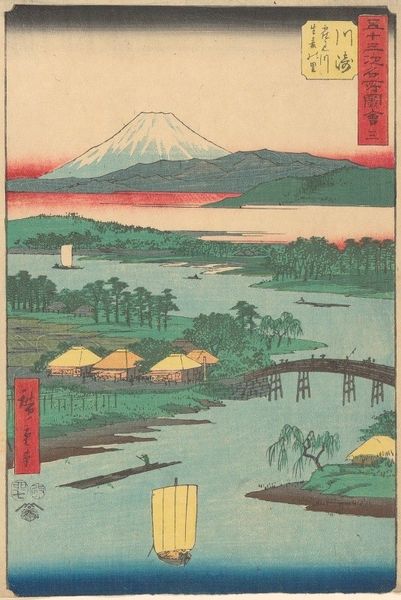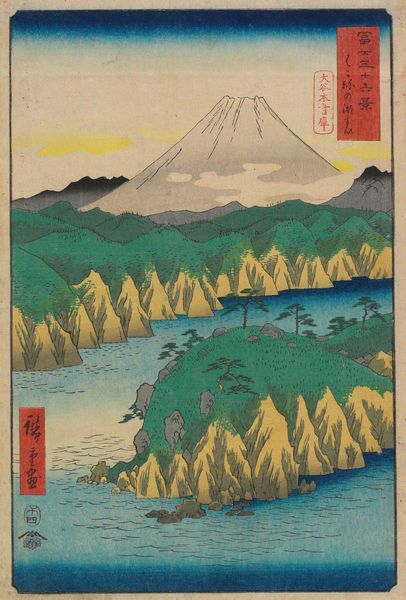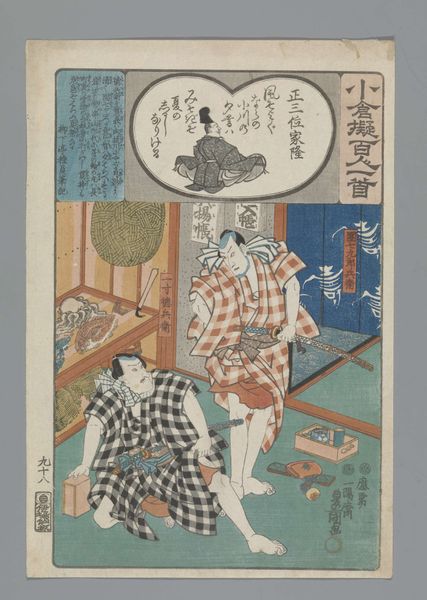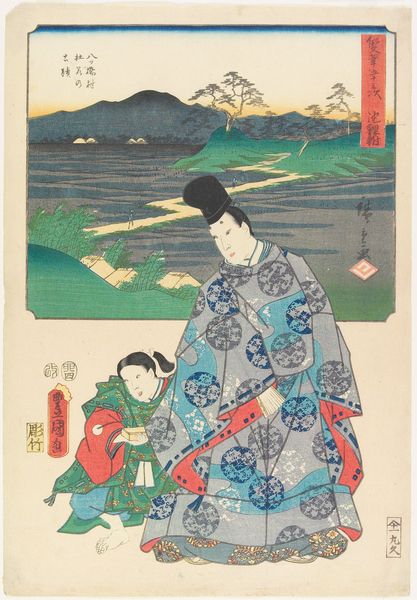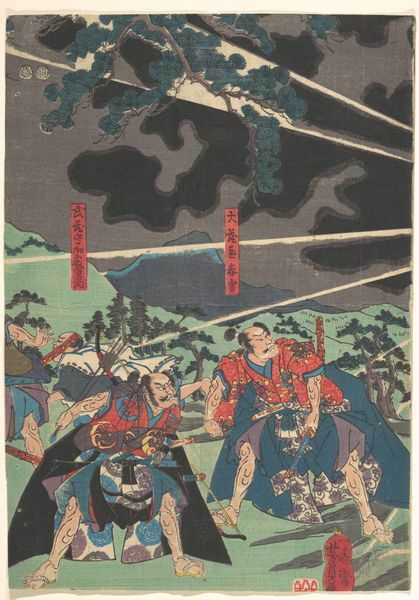
Mt. Fuji Seen Over the Lake at Hakone and two Other Images Possibly 1858 - 1859
0:00
0:00
print, ink, woodblock-print
# print
#
asian-art
#
landscape
#
ukiyo-e
#
japan
#
figuration
#
ink
#
woodblock-print
Dimensions: 13 1/4 × 9 1/8 in. (33.7 × 23.2 cm) (image, vertical ōban)
Copyright: Public Domain
Curator: Here we have a woodblock print by Utagawa Kunisada, likely created between 1858 and 1859, titled "Mt. Fuji Seen Over the Lake at Hakone and two Other Images". It's an intriguing composition. Editor: Absolutely. My first impression is that it is separated into distinct, almost narrative registers, with a dreamlike quality due to the contrasts of night and day, domestic and wild. The two upper scenes are shrouded in darkness, yet the bottom registers burst with blues and greens and an iconic mountain view. Curator: Yes, Kunisada often juxtaposed disparate scenes like this. We see the landscape tradition of ukiyo-e coupled with these genre scenes. The figures up top are captivating - performers maybe? - contrasted against a classic landscape of Fuji-san, signifying something about culture and national identity perhaps. And this work, itself, an interesting reflection of a period where Japanese prints were increasingly engaging with national themes. How can we understand these juxtapositions of popular culture? Editor: That is a fantastic question. One must analyze these "floating world" depictions against the restrictive socio-political climate of the late Edo period and the ever tightening control over public spaces. These visual worlds were created against this historical backdrop of artistic limitations. In some ways, a print of Fuji can never *just* be a mountain, but must become a charged symbolic arena for a repressed nation to define its identity against its sociopolitical forces. These seemingly mundane characters set against supernatural creatures under moonlight are allowed to find freedom away from the gaze of reality. Curator: Precisely. This resonates even now. The choice of subjects reveals insights into how Japanese society saw itself, but also its desires, hopes, or frustrations as a community experiencing various changes from industrialization to interactions with western ideologies. Looking deeper, the compositional framing becomes politically charged itself—the separation between reality, performance, and nature almost act as commentary to each other. Editor: Thank you. That intersectional framing and awareness feels necessary for considering a work that contains such a wealth of cultural markers. I’ll remember that today!
Comments
No comments
Be the first to comment and join the conversation on the ultimate creative platform.
